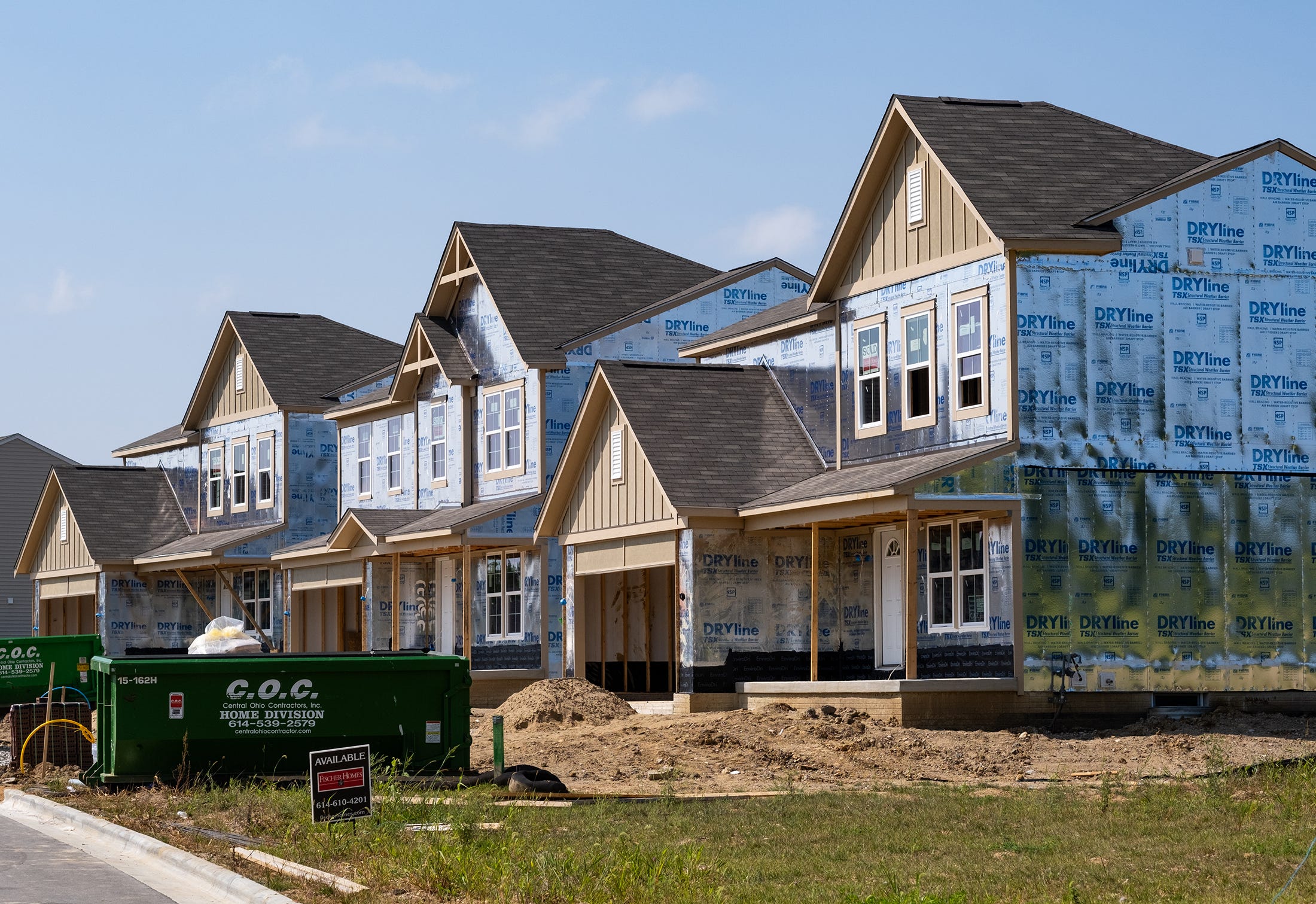Licking County’s Housing Shortage Poses a Challenge for the Intel-Fueled Economic Boom
Home builders are responding to the increased demand arising from the massive Intel development, but it’s not enough to meet the residential needs in the area and the rest of Central Ohio.

It’s not challenging to find a lively zone of construction commotion anywhere near Johnstown in Licking County these days. Beside Intel, its ancillary industries and other major companies that have announced business investments in the area, eight developers were building 1,675 homes in 10 housing projects in the county this summer.
That’s a decent start for new housing, but at that pace, it isn't enough. Builders are putting up about 12,000 new homes each year in Central Ohio, but the need, even now, is closer to 19,000 annually.
Land costs and infrastructure uncertainties (particularly water and sewer) are slowing the process in Licking County, says Jon Melchi, executive director of the Building Industry Association of Central Ohio. It can take builders up to three years before they can even start constructing the first house in a new subdivision.
“The biggest challenges for the residential construction industry [are] getting land acquired, zoned and having appropriate infrastructure,” he says. “That has made communities like Heath, Hebron and Newark very attractive in the near term.”
At least an additional 726,000 people are anticipated to move into the 15-county Central Ohio region by 2050, boosting the current population of 2.4 million to 3.15 million, according to the Mid-Ohio Regional Planning Commission. The demand for housing is likely to be spread throughout the region. MORPC projects Franklin, Licking and Madison counties will grow by around 30 percent, while Delaware County could grow by 80 percent.
“Don’t forget,” says Patti Brown-Wright, president of Columbus Realtors, “Intel is bringing in people from California and Arizona. They are used to driving an hour from work.”
But worrisome for those in the housing field is finding affordable homes for newcomers. The elongated permitting process and material costs continue to drive higher prices.
“Housing prices in the past 10 years have grown at almost two times the rate of median household income, and rent prices have grown by 35 percent of that,” says Duwain Pinder, a partner with McKinsey & Co., global management consultants with a Columbus office. “This has to be a regional issue when you think of economic impact and growth.”
Because it’s ground zero for development, Licking County is likely to grow at least slightly faster than surrounding counties. Outlying counties aren’t as well-versed or staffed to handle the development fastballs headed their way, but MORPC offers a variety of tools and programs for communities to develop plans and policies to support additional housing, says Jennifer Noll, the agency’s associate director for community development.
One program designed for Licking County is the Framework Initiative. “It’s a collaborative planning effort of 14-16 communities within Licking County who have the shared experience of a major employer coming into the area,” she says. “Our region is growing, and no community is going to be immune. We really encourage them to prepare for it and think strategically.”
This story is from the October 2023 issue of Columbus Monthly.